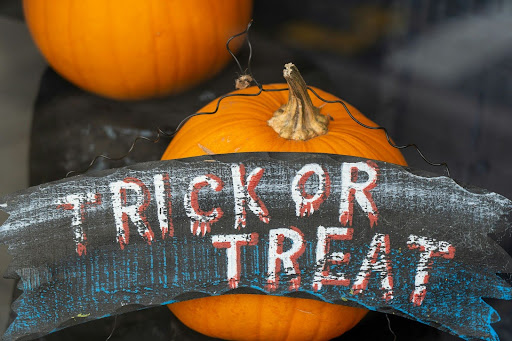
The Halloween season is officially in full swing — spooky decorations, trendy costumes and horror movie marathons are festive ways in which college students celebrate.. These are age-appropriate ways to participate in the season; however, even in adulthood, students surely haven’t forgotten the most classic childhood Halloween activity: trick-or-treating.
This nostalgic candy-gathering pursuit — where “stranger danger” is forgotten to show off costumes and collect free sweet treats — is a staple of American Halloween. Residential streets are flooded with eager children holding pumpkin-shaped candy buckets, and homes are filled with a variety of tasty snacks for them. Many don’t realize that this seemingly wholesome tradition has deeper and more complicated roots than expected.
Halloween in general, as well as trick-or-treating, originated in the region that is now the United Kingdom and France. The Celts, the ethnic group that lived there 2000 years ago, celebrated a pagan holiday called Samhain from Oct. 31 to Nov. 1. They believed that the spirits of the dead came back to earth during this period (against the wishes of the living). The basis for trick-or-treating is likely derived from a Samhain tradition.
Villagers dressed as ghosts and other paranormal figures to blend in with the dead. They would then visit various homes throughout their neighborhoods, singing to the spirits. In turn, they would be rewarded with sweet cakes.
After the Celtic lands gradually converted to Christianity, the pagan holiday of Samhain was morphed into All Saints’ Day and All Souls’ Day. The night before the sequence of celebrations, All Hallow’s Eve occurred on Oct. 31, the same day as modern Halloween.
Unlike 21st-century Halloween, their version of trick or treating happened on Nov. 2. Peasants would approach the homes of wealthy families, asking for “soul cakes” in exchange for prayers for their deceased loved ones.
In Scotland and Ireland, a different version of this tradition occurred: children would perform a dance, song or other type of routine to receive a small reward, such as fruit or nuts. This is the origin of the trick-or-treating of today.
Halloween traditions were brought to the United States by early British settlers. Trick-or-treating was introduced by the influx of Irish immigrants in the mid-19th century, popularizing pranks that emphasized the trick portion of “trick or treat.” This spiraled into elaborate acts of mischief and even crime in the 1920s and 30s, which resulted in the organization of family-friendly, community-sponsored Halloween celebrations.
Post-WWII, the successful economy lent itself to the rapid growth of Halloween festivities, namely trick-or-treating, across the United States. Candy companies gained a reinvigorated popularity during the early 1950s. They used this newfound success to push out Halloween promotions, creating the connection between the holiday and pre-packaged candy rather than homemade treats that were previously popular.
This continues into modern-day trick-or-treating — consumers spent an estimated $3.6 billion on candy during the 2023 Halloween season.
It’s evolved from a holiday to ward off spirits to one of the largest corporate spending days in the US. Nevertheless, one aspect has remained constant — participation in a combination of tricks and treats!









